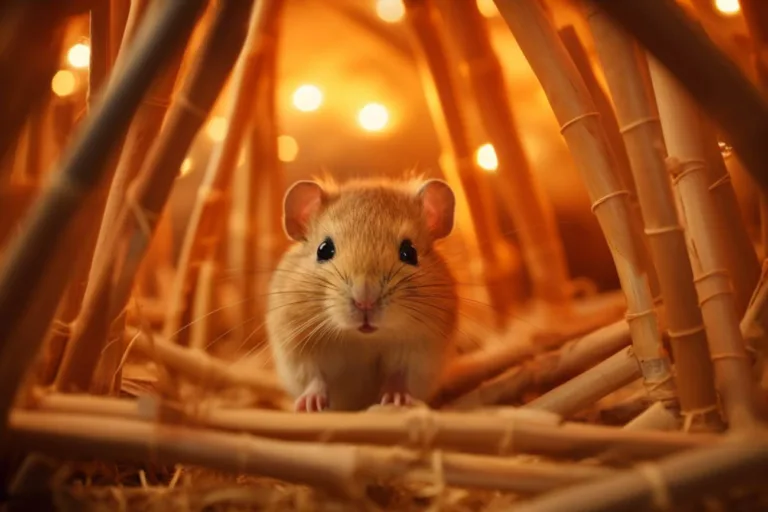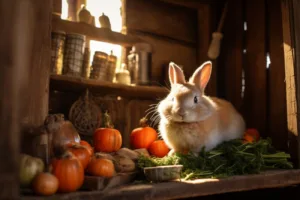When it comes to small, burrowing mammals, gerbils are often overlooked in favor of their more famous cousins, such as moles or gophers. However, these charming rodents have a unique and intricate underground lifestyle that is truly worth exploring. In this article, we’ll delve deep into the world of gerbil burrows and discover the remarkable adaptations that enable these creatures to thrive beneath the surface.
The art of digging
Gerbils are natural diggers, and their burrows serve as both their homes and a means of survival. These burrows can be found in a variety of environments, from deserts to grasslands, and they play a crucial role in the gerbil’s life. Let’s take a closer look at the art of digging for gerbils.
1. **Digging Techniques**: Gerbils use their strong front claws and teeth to excavate tunnels in the soil. These tunnels can range from a simple hole to complex networks that extend several feet underground.
2. **Burrow Architecture**: Gerbil burrows are not haphazard; they are carefully designed to fulfill various purposes. The burrow system typically consists of entrance holes, tunnels, nesting chambers, food storage areas, and even escape routes.
3. **Temperature Regulation**: One of the key advantages of living underground is temperature regulation. Gerbil burrows remain cooler in hot weather and warmer in cold weather, helping gerbils avoid extreme temperatures.
Life underground
Gerbils are highly social creatures and often live in colonies. Their burrows become bustling communities with specific roles assigned to different individuals within the group.
1. **Nesting Chambers**: These are cozy, underground bedrooms where gerbils sleep, rest, and raise their young. Nesting chambers are kept clean and lined with soft materials like fur or plant matter.
2. **Food Storage**: Gerbils are meticulous about their food. They create food storage areas where they hoard seeds, grains, and other food items. These caches help them survive during times of scarcity.
3. **Escape Tunnels**: In case of danger, gerbils have a network of escape tunnels that they can quickly retreat into. These tunnels have multiple entrances and exits to confuse predators.
Gerbils use their burrows not only for shelter but also for communication and navigation. They have a sophisticated system for interacting with their fellow colony members.
1. **Scent Markings**: Gerbils mark their territory and communicate with each other using scent markings. These markings are left on tunnel walls and serve as a way to identify individuals and establish dominance.
2. **Auditory Signals**: Gerbils make a variety of sounds, from chirps to thumping, to convey information. These sounds are essential for alerting others to danger or signaling mating readiness.
FAQs About Gerbil Burrows
Q1: How deep can gerbil burrows go?
A1: Gerbil burrows can range from a few inches to several feet deep, depending on the species and environmental conditions.
A2: Gerbils are territorial and typically do not share their burrows with other species. However, they may live in colonies of their own kind.
Q3: Are gerbil burrows harmful to the environment?
A3: Gerbil burrows can have a minimal impact on the environment, as they help aerate the soil. However, excessive burrowing in agricultural areas can be problematic.
Q4: Do gerbils hibernate in their burrows?
A4: Gerbils do not hibernate, but they may become less active during extreme weather conditions and rely on their burrows for shelter.
Q5: Are gerbil burrows vulnerable to predators?
A5: Yes, gerbil burrows can be vulnerable to predators like snakes and birds of prey. Gerbils have escape tunnels to flee from danger.
Q6: How do gerbils keep their burrows clean?
A6: Gerbils maintain cleanliness in their burrows by regularly removing waste materials and using separate nesting chambers for sleeping and raising their young.
Q7: Can gerbil burrows collapse?
A7: Gerbil burrows are designed to resist collapse, but in loose or sandy soils, collapses can occur. Gerbils constantly maintain and repair their burrows to prevent this.
Q8: Are gerbil burrows a threat to gardens or crops?
A8: While gerbil burrows can aerate soil, excessive burrowing in gardens or crop fields may lead to damage. Proper pest control measures may be needed in such cases.
Exploring the Hidden World
The intricate and fascinating world of gerbil burrows is a testament to the remarkable adaptations of these small rodents. From their digging techniques to their complex social structures, gerbils have carved out a unique niche for themselves beneath the earth’s surface. So, the next time you spot a gerbil scurrying about, take a moment to appreciate the hidden world it inhabits below ground.
Se även nedan:






